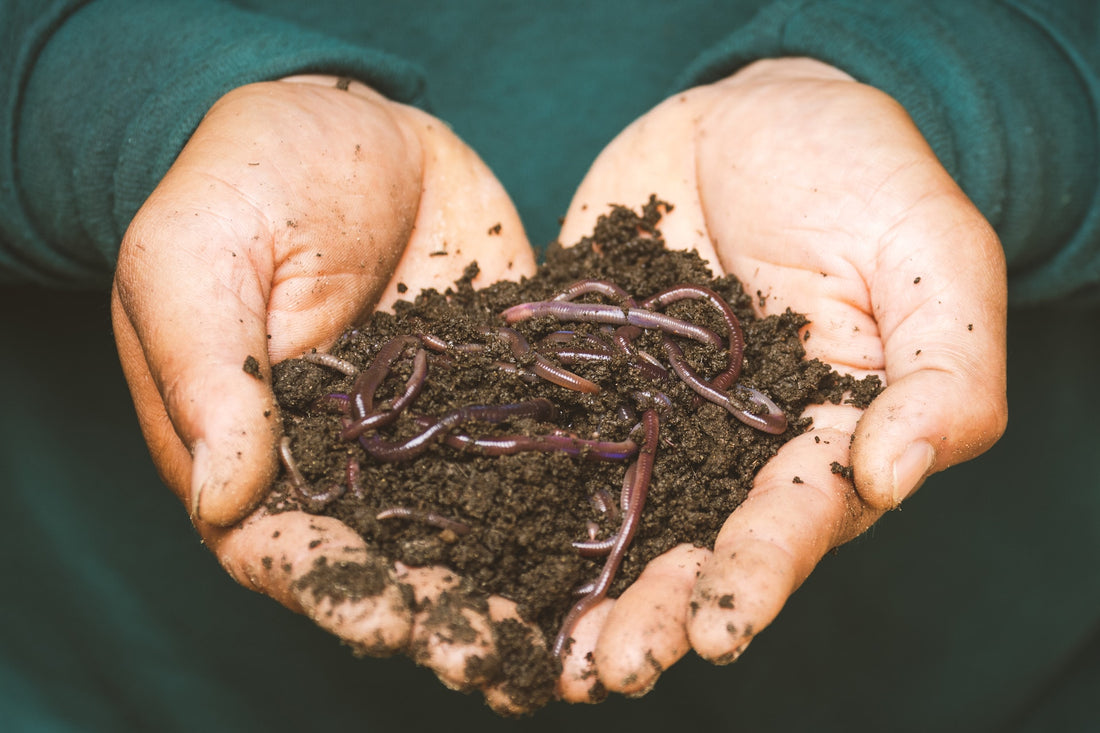Worm composting is an easy and eco-friendly way to convert kitchen waste into nutrient-rich compost that helps plants thrive. In this article, we will discuss how to set up and maintain a worm composting system, the benefits of worm composting, and how to choose suitable worms.
What is Worm Composting?
Worm composting is a process that involves using worms to break down organic materials such as food scraps, leaves, and paper into nutrient-rich compost. Worms consume organic materials and excrete nutrient-rich castings that can be used as fertilizer for plants. The process of worm composting is natural, safe, and easy. It can be done indoors or outdoors, depending on your preference and climate.
How Does it Benefit Your Garden?
Worm composting has several benefits for your garden. First, it provides a steady supply of nutrient-rich compost that helps plants grow and thrive. Worm castings are rich in nitrogen, phosphorus, and potassium, which are essential nutrients for plant growth. Second, worm composting helps reduce waste in landfills. Composting your kitchen scraps diverts waste from landfills and reduces greenhouse gas emissions. Third, worm composting helps improve soil structure and water retention. The organic matter in worm castings helps improve soil structure, making it easier for plants to absorb nutrients and water.
Choosing the Right Worms for Composting
Not all worms are suitable for composting. The most commonly used worms for composting are red wigglers (Eisenia fetida) and European nightcrawlers (Eisenia hortensis). These worms are easy to care for and thrive in a composting environment. Red wigglers are smaller and more efficient at breaking down organic materials, while European nightcrawlers are larger and better suited for outdoor composting. When choosing worms for composting, make sure to purchase them from a reputable supplier and avoid using worms from your garden, as they may not be the right species for composting.
Setting up a Worm Composting System
Setting up a worm composting system is easy and can be done with just a few simple steps. Here's how to get started:
- Choose a container: You can use any type of container for worm composting, as long as it has drainage holes and a lid. Plastic bins or wooden boxes work well for indoor composting, while outdoor composting can be done in a worm bin or in-ground composting system.
- Add bedding: Worms need bedding to live in and to help break down the organic materials. Bedding can be made from shredded paper, cardboard, or leaves. Make sure to moisten the bedding before adding the worms.
- Add worms: Once you have your bedding, it's time to add the worms. Start with a small number of worms and gradually increase the amount as they reproduce. Red wigglers can be added at a rate of 1 pound per square foot of surface area, while European nightcrawlers can be added at a rate of 1/2 pound per square foot.
- Add food scraps: Worms can eat a variety of organic materials, including fruit and vegetable scraps, coffee grounds, and eggshells. Avoid adding meat, dairy, and oily foods, as they can attract pests and cause odors.
- Maintain the compost: To maintain your worm composting system, keep the bedding moist and add food scraps regularly. You can also add shredded paper or leaves as needed to maintain the proper carbon-to-nitrogen ratio. Avoid overfeeding your worms, as this can cause odors and attract pests.
Maintaining Your Worm Composting System
Maintaining your worm composting system is easy and requires minimal effort. Here are some tips for keeping your system healthy and productive:
- Monitor moisture levels: Worms need a moist environment to thrive. Make sure to keep the bedding moist but not too wet. If the bedding is too wet, add more dry bedding or paper to absorb the excess moisture.
- Harvest the compost: Once the compost is ready, you can harvest it by removing the finished compost from the container and separating it from the worms and bedding. Use the compost as fertilizer for your plants.
- Clean the container: Over time, the container may become dirty and need to be cleaned. Use a brush or cloth to scrub the container and rinse it with water. Avoid using soap or chemicals, as they can harm the worms.
- Troubleshoot problems: If you notice any problems with your composting system, such as odors, pests, or worms escaping, address them immediately. Adjust the moisture levels, add more bedding, or stop feeding the worms until the problem is resolved.
Worm composting is an easy and effective way to turn kitchen waste into nutrient-rich compost for your garden. By following these simple steps, you can set up and maintain a worm composting system that will help reduce waste, improve soil health, and provide a steady fertilizer supply for your plants. Remember to choose the right worms, keep the compost moist, and avoid overfeeding your worms. With a little effort, you can enjoy the benefits of worm composting and help make the world a greener place.



